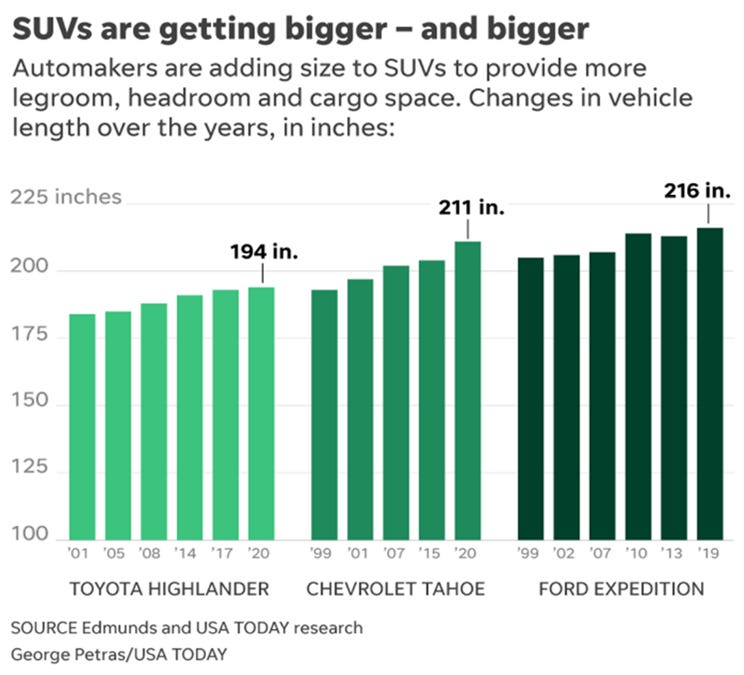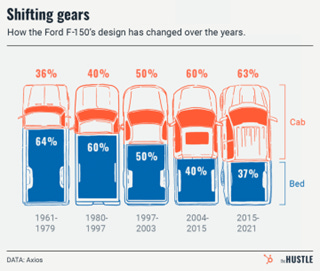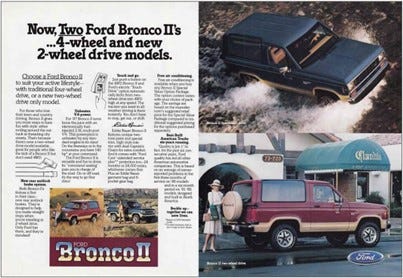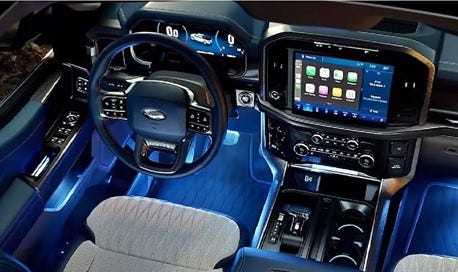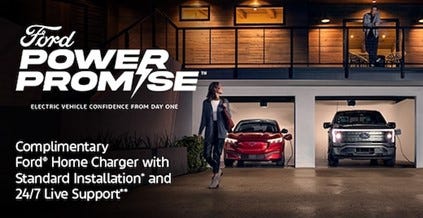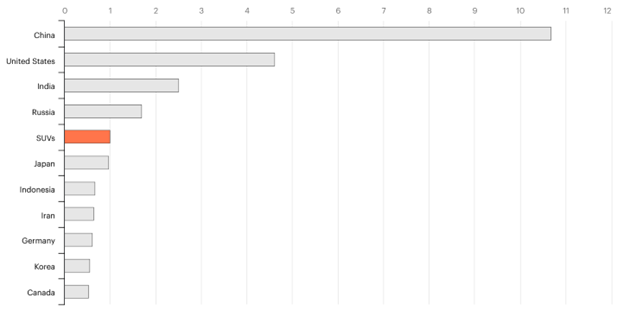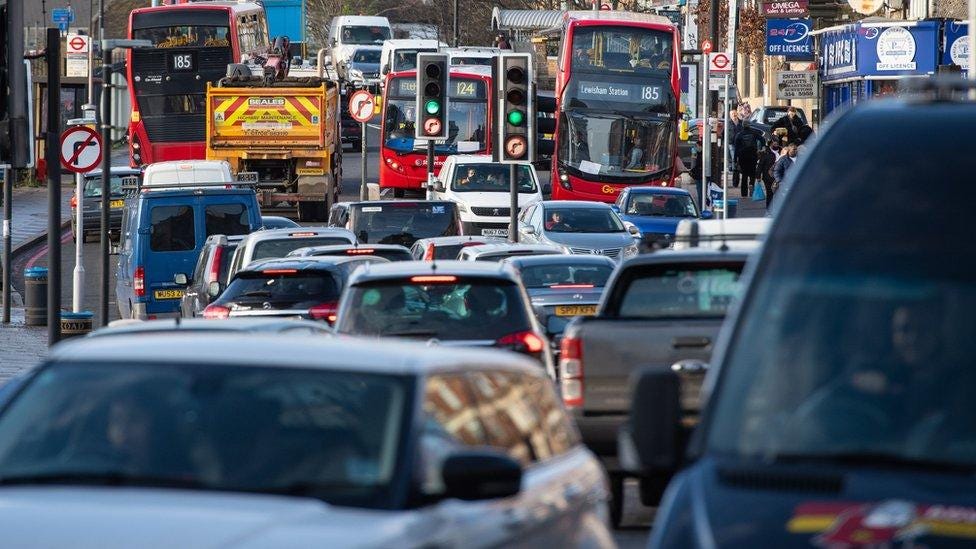Ford's "Blueprint" for Profits
With much fanfare, Ford Motor Company opened its new research and tech center in June of 2024 in Detroit’s old Corktown neighborhood. The research and tech complex, called Michigan Central, includes Ford’s EV division and Google’s “Code Next Detroit” that wants to “cultivate the next generation of Black, Latinx and Indigenous tech leaders” as well as a host of mobility tech startups. Centered around the restored Detroit’s Michigan Central train station, the center, according to Ford, will concentrate on developing high-tech solutions to mobility problems around the world. By concentrating on solving global mobility problems through new technologies, Ford’s Michigan Central can be seen as the next stage of what the company announced as its goal more than a decade ago, “Blueprint for Mobility.”
"Blueprint for Mobility" was introduced in February of 2012. Its overall stated goal was to address what Ford Motor Company believed to be the coming urban traffic congestion around the world as more and more people moved into cities and as Ford saw it more of urban dwellers moved into the middle class and gained the financial means to purchase cars.
The “Blueprint” encompassed three stages. In the near-term (2012-2017), Ford was to concentrate on existing new mobility options such as ride-sharing and semi-autonomous features for parking and driving in slow-moving traffic such as alerting drivers to traffic jams and adaptive cruise control. In the mid-term (2017-2025) autonomous technologies would take a more prominent role. Drivers were to have the option of letting the car take control of lane changing, driving on freeways, and dealing with traffic jams. In this scenario the emphases were to be on vehicle to vehicle (V2V) communication and vehicle to infrastructure communication (V2I). V2V communication was to enable cars to share information about their speed, location, and direction to enhance safety. V2I communication allow vehicles to interact with traffic lights and road signs for better navigation and traffic management. In the long-term (Post 2025), Ford’s “Blueprint” envisioned what it called a “true network of mobility solutions,” connecting pedestrians, bicycles, private and commercial vehicles, and public transportation to improve safety, save time, conserve energy, and lower emissions.
Ford’s technological innovations, however, have largely fallen behind schedule. Vehicle-to-vehicle and vehicle-to-infrastructure communication, along with self-driving cars, remain in early developmental stages. (1) Additionally, ride-sharing or ride-hailing services are proven to contribute to urban traffic congestion. (2)
However, given the company’s continuing interest in solving the world’s mobility challenges, it is fair to ask if Ford Motor Company's actual products are aligned with the broader long-term goals of the “Blueprint for Mobility” namely conserving energy, reducing emissions, enhancing safety, and alleviating congestion?
Conserving Energy/Lowering Emissions
Cities account for 70% of global greenhouse gas (GHG) emissions. (3) In one-third of major cities worldwide, over 30% of total emissions come from on-road transportation. Developing countries contribute a larger overall share, while cities in developed nations have higher per capita emissions. (4) Simultaneously, transportation is the fastest-growing consumer of fossil fuels and the leading source of CO2 emissions. Additionally, the rapid urbanization in developing countries is driving a sharp increase in energy consumption and emissions from urban transport. (5)
Given Ford's "Blueprint," which claims as one of its goals reducing emissions and conserving energy, (6) one might expect the company to focus on producing fuel-efficient smaller cars that by the virtue of their size would also help reduce congestion. Instead, Ford has taken the opposite approach, building increasingly larger and less fuel-efficient SUVs and pickup trucks. (7)
In 2018, Ford stopped producing its passenger cars, continuing only with the popular Mustang, and shifted its focus in the United States to larger and larger SUVs and pickup trucks. Today, some of Ford’s “light trucks,” along with those from other manufacturers are as big as some of WWII tanks, benefiting from the lower fuel economy standards set by the U.S. government. Larger SUVs and pickup trucks have less stringent fuel economy requirements than sedans, a difference that has been successfully lobbied for by U.S. automakers, allowing them to produce these vehicles at a lower cost and thus larger profit margins. (8)
The standard industry excuse for making these polluting gas guzzlers has been that they are only responding to consumer demands (which for Ford, is the antithesis of the goals of its own “Blueprint for Mobility.”) Yet, “light trucks” as urban vehicles did not exist before 1980s. SUVs were introduced as vehicles that are fit for urban family life, in early 1980s by American car makers to deal with the so-called Japanese invasion. With oil prices at all-time high, fuel economy standards for passenger cars had been tightened by the federal government in the 1970s, making it difficult for large American cars to compete with fuel efficient Japanese cars. Instead of developing more fuel-efficient vehicles, U.S. car companies opted for getting around the fuel efficiency standards by developing a new class of vehicles. Car bodies were bolted on truck chassis which allowed Detroit manufactures to evade fuel economy standards that did not apply to trucks and sell them as passenger vehicles in a market where for the time being they faced no competition. (9) Helped by Reagan Administration’s quota on Japanese cars, Ford and other American manufacturers were marketing SUVs as rugged yet luxury family vehicles suitable for city driving.
This marketing approach was later extended to pickup trucks and sustained through decades long campaign of advertising that juxtaposes ruggedness with luxury, family life, and prestige. Today, over 80% of cars sold in the U.S. are SUVs and pickup trucks, and Ford is increasing its exports of these vehicles to Europe. (10)
The results have been predictable. In the U.S. SUVs and pickup trucks are now driven as many miles each year as passenger cars, (11) resulting in significantly higher CO2 emissions. Globally, according to the International Energy Agency (IEA), there were more than 360 million SUVs on the roads in 2023, generating around 1 billion tons of combustion-related CO2 emissions—an increase of about 100 million tons from the previous year. This rise accounted for over 20% of the growth in global energy-related CO2 emissions compared to 2022. The increase in CO2 emissions from SUVs is comparable to half of the emissions growth from the global electricity sector. Additionally, SUVs are associated with higher indirect emissions due to the materials required for their production. The global SUV emissions is now surpassing all emissions from Japan and several other major economies. (12)
Ford initially aimed to address emissions by promoting electric vehicles. However, the production of electric cars is often more polluting than that of traditional vehicles. Electric cars require more minerals, including lithium and cobalt, whose extraction is water-intensive and linked to human rights violations. Larger vehicles necessitate even bigger batteries, which further increase the demand for these minerals. Moreover, as with electric vehicles generally, electric SUVs and pickup trucks will continue to emit CO2 if the global electrical grid relies heavily on fossil fuels. Despite efforts to promote electric vehicles, consumer interest has stalled in the past two years, leading Ford to announce a reduction in its production of electric pickup trucks.
Safety
The increasingly larger SUVs and pickup trucks manufactured by Ford and its competitors pose significant dangers to their occupants, other passengers in smaller cars, and pedestrians. Due to their higher center of gravity, SUVs and pickup trucks are more prone to rollovers, often without hitting anything. In fact, over 90% of SUV rollover accidents involve just the vehicle itself. (14) In 2019, rollover accidents with SUVs accounted for 39% of all occupant deaths, while pickup trucks’ rollovers accounted for another 39% of occupants’ deaths compared to 16% for passenger cars. (15)
Additionally, SUVs and pickup trucks are more likely to injure passengers in sedans during accidents (16) and more dangerous to pedestrians than are passenger cars. They are not only heavier, but their height reduces the ability of the driver to see shorter pedestrians in front of the car, especially children, and they are more likely to cause injuries to the head and the torso that are more life threatening. In fact, pickup trucks and SUVs are linked to 30% increase in pedestrian fatalities in the last twenty years in the U.S., forcing NITSA to purpose changes to the design of these vehicles. (17)
The danger to pedestrians posed by these “light trucks” was documented by NITSA in 2015, three years before Ford announcement that it will concentrate on building “light trucks.” In 2018 Detroit Free Press reported on the dangers that “light trucks” posed to pedestrians. The article noted that while SUVs and trucks were involved in a third of pedestrian injuries, they accounted for 40% of pedestrian deaths, suggesting that injuries from collisions with these vehicles tend to be more severe. (18)
Despite this knowledge of the serious risks its larger vehicles pose to pedestrians, Ford decided to expand production of these oversized vehicles. Four decades earlier the company had shown similar reckless disregards for safety of its SUVs. In early 1980s Ford knew that its Branco II was predispose to rollover even at slow speed but nevertheless went ahead with production and sales of the vehicle. (19)
Congestion
As Ford had correctly predicted, urban traffic congestion has increased in around the world. In 2022, 78% of cities dealt with congestion levels that were higher than what they were in 2019. (20) In 2022 congestion cost the U.S. more than $81 billion per year, with the typical driver spending 51 hours in traffic which was 15 hours more than in 2021. The average driver paid $134 more for fuel and lost $869 in income. (21) While we are waiting for widespread introduction of vehicle to vehicle and vehicle to infrastructure technology that Ford believes will ease congestion, it is worth noting that Pickup trucks by the virtue of their length and their limited maneuverability, are a contributing factor to increased traffic congestion. (22)
Mobility is more complicated
Ford’s “Blueprint” assumes that with urbanization will come a larger middle class who will be drawn to the trappings of middle class living one of which is car ownership. Ford products will be available to make sure that urban populations own vehicles that are technologically advanced to allow their owners to reach their destinations with ease and safely and avoid harmful effects of vehicular emissions.
Not acknowledged in this scenario are at least three important facts.
One is the growing inequality in nearly every country between the very few and everyone else and persisting poverty, especially in urban centers and global South. Car ownership in the global South hovers only around 15%. (23) In the United States, where owning a car is indispensable to people’s ability to move around, transportation is the second highest expenditure for U.S. families (after housing) and 8% of the population including 14% of households of color and among them 19% of African Americans, do not own a vehicle. (24) More than two-thirds of Americans live paycheck to paycheck, (25) making it difficult to imagine a scenario where large number of people even in the United States will be in a financial position to buy SUVs with starting prices that are between $30,000 to $65,000 or pickup trucks with price tags of as high as $100,000. It is not surprising that those who buy SUVs and pickup trucks are better off financially. Those who own pickup trucks have a median annual income of $108,000 and those who drive SUVs have a median income of $97,000. (26) They can therefore afford the inflated prices manufacturers charge (27) and the higher cost of fuel that comes with the poor fuel efficiency of these vehicles. (28)
Two is the fact that not only their higher levels of dangerous emissions are hazardous to health, but SUVs and giant pickup trucks are now the driving force behind global warming. This is not only in contrast to the initial goals of the “Blueprint” but also Ford Motor Company’s stated commitment to be a sustainable company, conserving water, respecting human rights, and reaching net zero by 2050. Time is rapidly running out on saving a living planet Eart. The rate of global warming has indeed accelerated in the past decade, (29) and in the next two decades water shortages are expected to cut world’s food production by half. (30) Heatwaves and hurricanes are now more frequent, more severe, and deadlier than just a decade ago. (31)
Three, continuing reliance on cars as the primary mode of transportation, albeit more technologically advanced, only perpetuates the car culture. In fact, as early as December of 2012, Barb Samardzich, vice president of product development at Ford of Europe elaborated on the problems that Ford Motor Company’s “Blueprint” was aiming to address. She noted as “unsustainable” not only the urban traffic congestion and emissions but also acknowledged the emotional attachment people have to cars as a problem and the need for thinking about solutions to the problems that this attachment has created. See here. It is important to keep in mind that high tech cars are still cars! More vehicles will add to the problems that the “Blueprint” purports to address. They will not only add to air pollution and congestion, but also contribute, as cars have done for a century, to urban sprawl, more roads, need for building wider streets, and wider and longer parking spaces. Today, 1/5th of the land in America’s cities of one million or more is already devoted to cars. (32) Cars are also costly to own. Between monthly payments, fuel, registration, taxes, and insurance, Americans who own cars pay on average of about $1000/per month just to be able to drive their cars. (33)
What is true mobility?
Ford's “Blueprint” aims to boost car sales through technology, promoting the idea of “mobility” as simply getting from point A to point B quickly and safely in Ford vehicles. However, even within the confines of Ford’s limited view of mobility, Ford's offerings—primarily large trucks and SUVs—the company fails to be any different from its competitors and thus fails to meet its own goals. The size of Ford’s vehicles makes them resource-intensive to produce. They require more metals, glass, and rubber. These vehicles also contribute to higher emissions due to poor fuel efficiency, pose risks to both their occupants and others on the road, and are often unaffordable for most Americans let alone the populations of the so-called developing world. Approximately two-thirds of wage earners in the U.S. live paycheck to paycheck and half of the global population survives on less than $6.86 a day (34) Not surprising, Ford’s advertising primarily targets wealthier individuals who can afford overpriced SUVs and pickup trucks.
The concept of mobility encompasses more than what Ford's “mobility” labs in Detroit focus on. (35) True mobility should prioritize a transportation system that is socially and environmentally equitable and thus sustainable. An equitable system provides affordable transportation, connecting people to education and job opportunities regardless of race, ethnicity, gender, income, or ability. It should also foster social relationships and civic engagement. Furthermore, a truly equitable transportation system must minimize contributions to global warming during both production and operation, and it should avoid the exploitation of natural resources and violations of human rights.
The United Nations Sustainable Development Goals (UNSDGs), introduced around the same time as Ford's “Blueprint,” calls for cooperation between governments and the private sector to make cities inclusive, safe, resilient, and sustainable by 2030. This includes providing access to safe, affordable, and sustainable transport systems for all, with special attention to vulnerable groups such as women, children, persons with disabilities, and the elderly.
A genuine “mobility” company should actively contribute to building a socially and environmentally equitable transportation system. Time has run out for mere technological experimentation; global warming is already gaining momentum. Research and experience demonstrate that public transportation can save lives, promote social equity, and reduce emissions while offering fast and reliable service that fosters more compact and walkable cities. (36) Yet, in 2020 the world had to accelerate the pace of building clean public transportation by factor of six and construction of safe bike paths by factor of ten to remain within 1.5 degree C target.
What role Ford can play in building this new world? It can start aligning its corporate goals with those of the larger society by balancing the millions it pays to its executives by paying its workers instead of threatening them with future unemployment if they continue to demand better pay, (37) stop the buying back of its own stock to increase the company’s book value, (38) and instead invest in its workers and the company’s productive capacity. Ford can manufacture small compact cars, stop fighting higher fuel efficiency regulations, invest in production of alternative modes of transportation such as electric bikes, buses, and bullet trains, transportation modes that promote mobility with much less resources (39), and take its own climate policy commitments seriously. (40) The company should also stop using loopholes and pay its taxes in full. (41). Corporate tax dodging starves the ability of the public sector to build the infrastructure and to carry out the research and development that is require for building an economy that is both socially and environmentally sensible. The electric bikes that are being developed by Ford’s startup partner companies inside Ford’s Detroit labs need bike paths that require large investments because for them to work they must be comprehensive and safe. Urban and intercity rail requires multitrillion dollar investment, the electric grid that is to power this new economy must be clean, relying on a network of not only solar and wind energy generators but also nuclear plants. Additionally, the world has reached a point where scientists believe clean energy by itself is not going to stop the heating of the planet and thus carbon must be extracted directly from the atmosphere, a requirement that can cost more than $500 trillion in the next several decades. (42)
Can we reasonably expect Ford to do all these voluntarily (or any of its competitors)? Given the company’s history and present trajectory, the answer must be a resounding no. Can we expect the U.S. government to impose regulations that force Ford (and other car manufacturers) to change course? Given the influence of corporate America in Washington DC and the pitfalls of a system of separate branches of government which requires repeated compromise to pass any legislation, it is hard to imagine government leadership either. Yet, with overwhelming cross section of the young worried about climate change (43) the time may be soon coming for a citizen movement that can force the government to stop letting corporations kick the can down the road of their imaginary 2050 net zero-climate tranquility, drop their empty corporate stakeholder PR, and get out of the way of real change.
https://www.seattlebikeblog.com/wp-content/uploads/2013/12/2nd-Ave-Gif2.gif
(1) https://www.here.com/learn/blog/ai-how-close-are-we-to-self-driving-cars ; https://www.theverge.com/2022/8/12/23303191/car-v2v-fcc-spectrum-wifi-court-ruling; https://usccg.com/blog/vehicle-to-everything-communication-and-its-manufacturing-implications/
(2) https://news.mit.edu/2021/ride-sharing-intensifies-urban-road-congestion-0423
(5) https://www.iea.org/energy-system/transport
(6)
(7) https://www.axios.com/2023/01/23/pickup-trucks-f150-size-weight-safety
(8) https://www.reuters.com/business/autos-transportation/automakers-blast-us-plan-hike-fuel-efficiency-rules-2023-10-16/#:~:text=Automakers%20blast%20US%20plan%20to%20hike%20fuel%20efficiency%20rules%20%7C%20Reuters ; https://www.meche.engineering.cmu.edu/_files/images/research-groups/whitefoot-group/WS-FootprintFuelEconomy-EP.pdf ; https://www.dailymail.co.uk/news/article-9823577/Road-warriors-American-trucks-SUVs-longer-tanks-fought-World-War-II.html
(9)
(10) https://media.ford.com/content/fordmedia/feu/gb/en/news/2022/11/29/europe_s-best-selling-pickup-goes-platinum--new-ford-ranger-mode.html#:~:text=to%20New%20Levels-,Europe's%20Best%2DSelling%20Pickup%20Goes%20Platinum;%20New%20Ford%20Ranger%20Model,Lifts%20Luxury%20to%20New%20Levels&text=DUNTON%2C%20UK%2C%20Nov.,level%20in%20the%20Ranger%20family; https://media.ford.com/content/fordmedia/feu/en/news/2018/12/12/ford-suvs-achieve-record-breaking-259-000-sales-in-europe--ecosp.html
(11) https://afdc.energy.gov/data/10309
(13) https://www.bbc.com/news/articles/cevj21kjv1wo
(14) https://www.nhtsa.gov/crashworthiness/rollover-research
(15) https://crashstats.nhtsa.dot.gov/Api/Public/ViewPublication/813323
(16)
(17) https://www.msn.com/en-us/autos/news/nhtsa-wants-to-change-the-way-trucks-and-suvs-look/ar-AA1qh3Xe
(18) https://www.freep.com/story/money/cars/2018/06/28/suvs-killing-americas-pedestrians/646139002/
(19)
(20) https://inrix.com/press-releases/2023-global-traffic-scorecard-uk/
(21) https://arstechnica.com/cars/2023/01/heres-where-traffic-sucked-the-most-in-2022/
(23) https://www.sciencedirect.com/science/article/pii/S2667091724000050?dgcid=rss_sd_all
(24) https://nationalequityatlas.org/indicators/Car_access#/
(26) https://usa.streetsblog.org/2021/04/21/suv-and-pickup-purchases-soar-but-whos-buying
(27) https://www.theglobeandmail.com/drive/mobility/article-the-suv-markup-how-much-more-are-you-paying-for-an-suv/#:~:text=In%202017%2C%20Automotive%20News%20found,profit%20margins%20for%20car%20companies ; https://www.kbb.com/ford/suvs/
(28) https://www.bts.gov/content/average-fuel-efficiency-us-light-duty-vehicles
(33) https://www.nerdwallet.com/article/loans/auto-loans/total-cost-owning-car
(34) https://blogs.worldbank.org/en/developmenttalk/half-global-population-lives-less-us685-person-day
(36) https://heatmap.news/economy/tokyo-anti-car-pedestrian-paradise; https://www.wri.org/insights/shifts-transform-transportation-systems-climate-goals; https://www.wri.org/insights/current-state-of-public-transport-climate-goals
(38) https://www.tipranks.com/stocks/f/buybacks
(39) https://climateandcommunity.org/research/more-mobility-less-mining/
(40) https://ca100.influencemap.org/livescorecard/Ford-Scorecard-37309
(42) https://esd.copernicus.org/articles/8/577/2017/
(43) https://www.theguardian.com/environment/2024/oct/17/young-americans-climate-change




